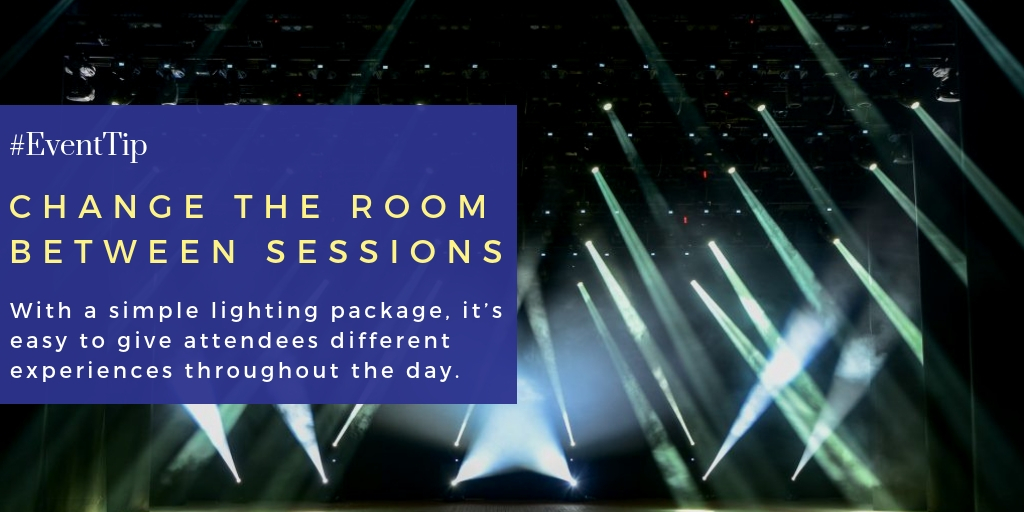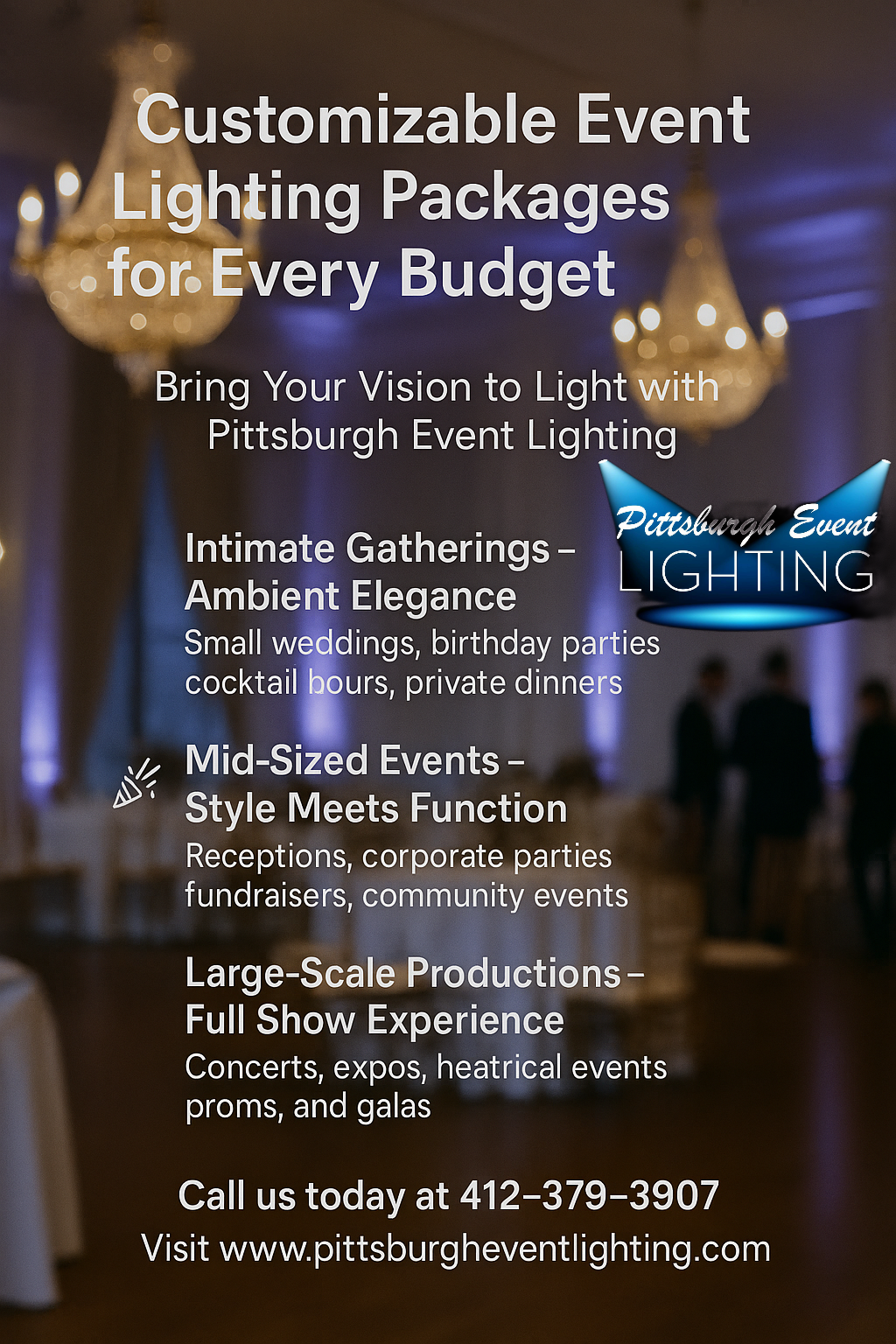“Lighting is a beautiful thing. It can enhance a room’s beauty or hide it’s flaws,” says Jen Amburn, event producer at RSN member, Colortone Staging and Rentals.
Right up there with good sound and a good screen for your presenter, lighting is a critical element for most events. It sets the stage for the event and brings the “wow” factor front and center.
Here are five ways you can maximize your event’s impact with lighting:
Lighting directs the audience’s focus
Aside from providing illumination so you don’t trip and fall, one of the key functions of event lighting is to signal where the audience should direct their attention. At any given moment during your event, there are a million distractions competing for your attendee’s attention and if you want to keep their eyes on stage, lighting can be the answer.
Lighting tells people where to look and sets the mood in the room. Walk into a dark room and you can’t help but be drawn to whatever is under the one spotlight.
You can selectively choose what your audience will see at different points of the program. There’s greater impact when you reveal a person, object or color in a room, as opposed to having everything on view at once.
“Selective focus is the idea that you can control your audience’s focus when its most appropriate,” says Eric Newkirk, vice president of design and creative at RSN member CEAVCO Audio Visual. “The lighting tells the audience what to focus on; this will put them at ease. Comfortable audiences are more engaged audiences. By doing this, you’re helping your audience experience what they are supposed to experience in the right order and progression you intended.”

Change the room between sessions
With a simple lighting package, it’s easy to give attendees different experiences throughout the day.
“Say you have two keynote sessions,” says Amburn. “One is a bit more straightforward and one is more of a party. You can change it from a stark ballroom where you’re learning to a party space by changing the movement and color of the lights. This is with the exact same lights—simply using the resources you already have.”
Thus, same venue, same day and same lights, but two wildly different experiences for the two events.
Lighting for décor
Most venues come with general illumination built into the space. Overhead lighting, which gives you light to see where you’re walking, but leaves the space looking bland. The lighting your AV partner can provide can go a long way towards creating an experience for attendees.
“Lighting is a great way to reinforce the theme of your event,” says Newkirk. “Your brand or cause will have its chosen colors and the lighting can augment this theme. For example, uplighting the walls is very common, and it is simple to have the lights shining your brand colors on the wall. Additionally, LEDs are coming down in price, so you can use battery-operated LED lights very inexpensively. This gives you a cleaner look and takes away the power and cabling costs of traditional lighting.”
Amburn concurs, noting “uplighting is cost effective and beautiful. I did an event at the Cleveland Convention Center recently. There are large pillars in the space and we put colored lights on the pillars, which immediately transformed the space from gray to bright and colorful. Lighting with brand colors makes it clear at a glance that this a (whatever) brand event!”
Lights, Camera, Action!
Filming an event completely changes your lighting needs. Cameras are far more sensitive to lighting contrasts than our eyes are. If you have ever taken a photo of someone in front of a sunset, you can readily understand the struggle of illuminating the subject and keeping the sunset colors bright in the photo.
“Anything with video requires a well-thought out and comprehensive lighting package to support the event so subjects look appropriate on camera,” says Jason Showers, vice president of production at RSN member, Advanced Staging Productions. “That includes separate lighting for the background and foreground so both areas render properly in the camera.”
Different kinds of events call for different lighting, which is why “there are three disciplines of lighting design,” explains Newkirk. “There’s lighting for décor, which is where most traditional event lighting falls; there’s theatrical lighting and then there is lighting for video.”
In general, each of these disciplines are more complex than the one preceding it, which is why it is important that your AV partner have the right staff and technical expertise to pull off whatever lighting you need.
Lighting for presenter and audience comfort
Under traditional stage lights, it can be tough for your presenters to see the audience, which can make the difficult task of public speaking all that much harder. To get around that, Showers recommends shining some lights on the audience:
“Putting light on the faces of the attendees can make your speaker more comfortable because they can see who they’re talking to and attendees feel more engaged because they are lit. These lights change the relationship between the presenter and the audience,” he says.
Light is one of the unsung elements of AV that can make or break your event. It adds depth and richness to the room and it directs the audience’s focus. RSN members can provide experience-driven insights on the best solution for your event.









